Otto Horn Extracts from the Horn deposition in the Demjanjuk case – 26 February 1980 in Berlin [photos added to enhance the text] Otto Horn was born in Obergrauschwitz near Leipzig, he attended an extended elementary school until the age of 14. He then worked on a farm for four years after which he worked as a miner in Borte. Horn worked in a psychological clinic at Arnsdorf serving two years apprenticeship and after qualifying he served for two years at a psychological clinic in Leipzig/ Dosen, and then he returned to Arnsdorf. In 1939 he joined the Wehrmacht attached to a medical battalion serving in Dresden, and then in Poland during the start of the Second World War as a medic. He was stationed at Geldern and then to France, in August 1941 he was released from the Wehrmacht, and ordered to the euthanasia institute at Sonnenstein, Pirna, where he served as a male nurse. In September 1942 he was ordered to the East and went to the SS Training camp at Trawniki and after two weeks training was sent in October 1942 was sent to the Treblinka death camp, where he worked in the Totenlager (the death camp/ Upper Camp). Survivors recalled after the war that Horn was a decent man who never hurt anyone, he supervised the mass graves and eventual burning of the corpses on “roasts.” Horn left Treblinka in September 1943, after the revolt a month earlier and went on an extended holiday in Arnsdorf with a simulated illness. In January 1944 he was posted to Trieste, along with former Aktion Reinhard colleagues. He refused to work and was sent back to the Heil und Pflegeanstalt in Arnsdorf. After fourteen days in Arnsdorf in December 1944 he was posted to the Landeschutzenbattalion in Plauen, possibly as a punitive measure, at the War’s end he was in Czechoslovakia where the Russians captured him. He was arrested and brought to trial in the first Treblinka trial in 1965, where he was acquitted, and he appeared in the film Shoah, by Claude Lanzmann during the 1980’s DIRECT EXAMINATION BY MR. MOSCOWITZ: Q. Please state your full name?
A. Otto Horn Q. What city do you reside in?
A. Berlin. Q. What is your date of birth?
A. The 14th of December, 1903 Q. What is your present age? A. I am currently 76. Q. What is your profession?
A. I am a male nurse. Q. Are you now working or are you retired?
A. I am a pensioner. MR. MARTIN: A what?
A: Mr Zanker : 'm a pensioner. Q. Have you been in German military service?
A. Yes. Q. Before we went off the record, you indicated that you travelled from Treblinka to Trawniki. Is that correct?
A. Yes. Q. And approximately when was it that you arrived at Treblinka?
A. After a few hours, but I wouldn't know the exact time. Q. Mr. Horn, what kind of place was Treblinka?
A. It was a camp - an extermination camp. Q. What if anything happened when you first arrived at Treblinka?
A. People were exterminated there, were gassed. Q. Let me refer you back to the first day of your arrival. Were you - were you met by anybody?
A. Yes. The Deputy Commander of the camp
Q. What was his name?
A. Franz. Q. And what did Franz do with you and the others who came to the camp? A. He showed us around - I mean the outside of the camp - fast. Q. What happened then? A. And then within the camp, we were divided up and I came into the upper camp. Q. Was that where you were assigned to duty?
A. Yes. Q. You were assigned to duty in the upper camp?
A. Yes. Q. Mr. Horn, I would like to show you what has been marked as Government Exhibit Number 1, which is a diagram in German of Treblinka. Attorney for defendant examines exhibit, Otto Horn offered his glasses which he puts on. Q. I show you [the exhibit] and let me ask you if this is a fair and accurate representation of the Treblinka camp as you recall it? A. As far as I recall, yes; but this - well I may not know how certain things were so exactly any more. [Horn is asked to point to the upper camp, and draw a circle around it] MR. MOSCOWITZ: Let the record reflect that the witness, using a pen, has just drawn a line around the area of the camp which is in the upper right-hand corner of the diagram, which has written in the middle "Totenlager". Q. Mr. Horn, you mentioned that you were assigned to the upper camp. Was there another part of the camp as well? A. Yes, the lower one right here [indicating] - the lower one [indicating]. MR. MOSCOWITZ: Let the record reflect that the witness pointed to this area of the camp [indicating] - the lower right-hand part of the diagram. Q. Mr. Horn, what was the function of the lower camp? What took place there? A. That was the unloading and undressing. Q. The unloading and undressing of whom?
A. By Germans; and partly by prisoners ordered for such purpose. Q. Who were the people who were unloaded and undressed?
A. Jews mainly. Q. Where did these Jews come from?
A. One doesn't know. One didn't know what area they came from.
Q. How did they arrive at this unloading?
A. By train, here [indicating]. Q. Mr. Horn, while you were stationed at Treblinka, were you in uniform?
A. Yes - yes, a gray uniform. Q. Did you have a rank? A. Unterscharfuhrer - something like a sergeant in the army. Q. Mr. Horn, directing your attention to the upper camp, what - what was located in the upper camp? A. The people were gassed there and burned. Q. By what means were they gassed? A. I don't know. There was some engine somehow. Q. Was it a chamber or building in which this took place?
A. It was here [indicating]. It was built there [indicating]. The gas chamber is here [indicating]. Q. Can you draw an "X" on the gas chamber on this diagram?
A [Indicating] Here, the gas chamber. MR. MOSCOWITZ: Let the record reflect the witness has drawn an "X" on a box which is marked "Neue Gaskammern" Q. This chamber, this gas chamber on which you have drawn an "X", this is the place where the Jews were brought to be gassed?
A. Yes. Right. Q. Were these people all men?
A. That were taken there? Q. Yes.
A. No. No. Just anything - men and women Q. Were there children included as well?
A. Yes. Q. Were there other Germans, aside from you, stationed on duty in the upper camp?
A. Yes, there were some. Q. Approximately how many were there?
A. Perhaps eight. Q. Was there a German commander of the upper camp?
A. Yes -- Matthes. Q. Do you recall who the commander was of the entire camp?
A. Stangl. Q. Aside from the Germans stationed in the upper camp, was anyone else stationed there?
A. Yes, there were Ukrainians there. Q. Generally, what were the duties of these Ukrainians?
A. They were guards on the towers, and when transporting the corpses away. Q. Were there Ukrainians stationed in other parts of the camp as well?
A. Yes, also at the lower. Q. The Ukrainians stationed -- these Ukrainian guards -- stationed in the upper camp, were they permanently there, or did they rotate down to the lower camp as well?
A. I can't say if they rotated. The guards possibly rotated. Q. Aside from the Germans and the Ukrainians, was there any - was there anyone else present or stationed in the upper camp?
A. No. Q. Were there any prisoners or inmates kept there?
A. Yes -- 200 approximately, who had to work there. Q. And what nationality were these people?
A. Mainly Jews. Q. What were the duties of these Jewish people who lived in the upper camp?
A. Transporting away the corpses and burning them. Q. Transporting the corpses away from where?
A. From the whole -- from the gas chamber, that is. Q. And to where would they bring the corpses?
A. To the pit here [indicating] and then burned right away. Q. Were there pits located in the upper camp where bodies were put?
A. Yes, there were some. [Indicates other pits on the diagram] MR. Moscowitz: Let the record reflect that the witness has drawn three circles in three squares in the upper right-hand corner of the diagram; each of these rectangular areas says "Leichengrube". Q. Mr. Horn, you stated that there were several hundred Jews living in the upper camp.
A. Yes. Q. Among these, were there any women?
A. Yes.
Q. Approximately how many?
A. Six, in the washing room.
Q. Do you recall? A. In the laundry. Q. Do you recall the names of any of these women?
A. Names I don't recall, but one was present in the Dusseldorf Trial. Q. In what year was that? A. That was from 1964 to '65. Q. She was there as a witness?
A. This woman? Q. Yes
A. Yes. Q. Mr. Horn, what were your duties in the upper camp?
A. Well there was no real assignment. Anybody could go where he wanted. This went automatically.
Q. Did you perform any duties?
A. Yes, supervision only.
Q. In reference to the gas chamber in the upper camp, Mr. Horn, who -- who was -- was there anyone in charge of the gas chamber?
A. Yes -- this Mathes and Schmidt. Mathes, as the Commandant, and Schmidt with the gas chamber always; operating the engines, Schmidt was. Q. Was Schmidt a German?
A. Yes.
Q. Did anyone assist him at the gas chamber? Did anyone assist Schmidt at the gas chambers?
A. Yes. There were always Ukrainians there.
Q. Were there different Ukrainians? Or were these always the same two Ukrainians present there?
A. These were always the same.
Q. So it was two particular Ukrainians who were always stationed at the gas chamber?
A. Yes. Q. Do you recall the names of these two Ukrainians?
A. One was called Ivan. The other I don't know.
Q. Would you spell the name "Ivan"?
A. I-w-a-n. Q. And you do not recall the name of the second Ukrainian?
A. No. No. Q. Would you describe the physical appearance of this "Iwan"?
A. He was tall and mighty. Q. Approximately how tall was he?
A. Approximately one meter eighty. Q. What was his build like? A. Well it was staunch, corpulent Q. What did his face look like? A. It was round, full. Q. What was his complexion like? A. Well normal. I wouldn't know. Q. Well, light or ruddy, or dark? A. Light. Q. What colour was his hair? A. I think black -- but dark, at least. Q. Was it long or short? A. Not as long as today, but -- I can't recall, exactly. Q. How was he dressed?
A. I think in black uniform. Q. Was he armed? A. With a pistol, yes. Q. Can you physically -- can you describe physically the other Ukrainian at the gas chamber? A. He was shorter -- Q. Was -- MR. MOSCOWITZ: I'm sorry. Go ahead. A. [Continued] -- and otherwise -- Well, no. Q. What colour was his hair? A. I don't recall. I can't say. Q. Was he heavy? Or thin? A. He was a bit shorter, a bit on the thin side. Q. Why is it you remember Iwan? A. He was always there. He was Schmidt's right hand. Q. Do you recall anything generally about his attitude or behavior?
A. What he did - or something like that? Q. How he conducted himself? A. He was always present there when a transport came, in the anteroom of this cell building. Q. Could you determine what his attitude was towards the German officers?
A. No, no, I couldn't. Well, he was rather -- well he was on -- he was on good terms -- with this Matthes and Schmidt.
Q. Was that unusual for the Ukrainians to be on good terms with them?
A. Yes, yes. Q. So you're saying he was closer with Matthes and Schmidt than the other Ukrainians were? MR. MARTIN: Objection.
MR. MOSCOWITZ: Okay.
[To interpreter] Go ahead. Go ahead. A. Yes, yes. Q. Did this Iwan have any particular skills?
A. Well he could handle engines and drive a car, and such things.
Q. Mr. Horn, you stated previously that this Iwan was present at the gas chamber A. Yes. Q. Do you recall seeing him at the gas chamber?
A. Yes. Q. Where was he at the gas chamber when you saw him?
A. The anteroom to the gas chambers. Q. Now when you say "anteroom", what part of the gas chamber is that? Is that the entrance?
A. Yes, the entrance here [indicating]. Q. Now at the time you saw him there, was he outside of the gas chamber, or was he inside of the gas chamber?
A. Inside. Q. You were able to see him inside the gas chamber?
A. Yes. Q. What was he doing there at that time?
A. He directed the prisoners, or he co-directed the prisoners, into the cells, into the chambers. Q. Now was he helping to direct the people -- the Jews -- into the gas chambers? MR. MARTIN: Objection. A. Direct them in, yes -- yes. Q. Did there come a time when you saw him at any other part of the gas chambers?
A. At the place where the engines were. Q. Which engines were these? These are engines of the gas chamber? MR. MARTIN: Objection. A. Yes. Q. Let me direct you to Government Exhibit 1 and ask you to draw -- using this pen [handing pen to witness] -- an "M" on the part of the gas chambers where the motors were?
A. [Indicating.] MR. MOSCOWITZ: Let the record relect that Mr. Horn drew an "M" on the right-hand side of the box which is labeled "Neue Gaskammern" -- which is in the upper right-hand part of the diagram, Government Exhibit 1. And his "M" is over to the right where it says "Moterenraum". Q. Mr. Horn, were these engines outside or were they enclosed inside a room?
A. Inside. They were insides. Everything was built in. Q. And did you see Iwan -- Was there -- Was there -- Strike that. Did you see Iwan go into this room where the motors were? MR. MARTIN: Objection. A. Yes. They spent most of their time there together with Schmidt. Q. Mr. Horn, you stated before that you saw Iwan in the area of the motors of the gas chamber.
A. Yes. Q. What if anything did you see him doing there?
A. No, I didn't see. I didn't go in there. I only saw him going in. Q. You saw him going into where? A. Into the gas chamber. Q. At the entrance you've already marked with an "M"?
A. Yes. Q. Was there anyone else with him at that time?
A. This Schmidt was always with him. Q. And was Schmidt with him at the time that he would go into that entrance?
A. Yes. There were always in there. They were always there. They were always there. Q. What would happen on such occasions after Iwan -- What if anything would happen in the gas chambers after Iwan and Schmidt entered into that motor room? MR. MARTIN: Objection. A. That was mostly when they were filled in the gas chambers. Then they went in -- into the gas -- that is, into the engine room. Q. And what if anything did they do in the engine room? MR. MARTIN: Objection. A. They certainly turned on the engines and gassed the people. Q. How long would the process of gassing last? A. Perhaps an hour. Q. And what if anything happened after that hour was over?
A. Then after one hour only, the chambers were opened. Q. And what happened then?
A. And then the corpses were carried away into the pits and partly for burning Q. Mr. Horn, were you tried in court for your activities at Treblinka?
A. Yes. Q. Where was that? A. At Dusseldorf Q. And what was the verdict concerning you at that trial?
A. I was acquitted. Q. Completely? A. Entirely, completely. Q. What type of gas was used at Treblinka?
A. I don't know either. Q. You were present and you saw them using the gas, weren't you? A. No. That was originated by -- that was made by the motors, by the engines. Q. But you were present there when the engines were going, weren't you?
A. No, I wasn't present. Q. You never knew the type of gas that was used at Treblinka?
A. No. MR. MOSCOWITZ: Objection. He's already stated it came from the motor. Q. You testified that you were in the German Army?
A. Yes.
Q. That you were drafted and not a volunteer, is that correct?
A. Right. Q. Mr. Horn, in this euthanasia programme, you knew that children were gassed, didn’t you?
A. No. I didn't know. I wasn't present there. Q. You were present though at Treblinka when children were gassed, weren't you?
A. Yes. Everybody -- children, and women, and men
Q. And you saw the children gassed at Treblinka, didn't you?
A. Yes. Q. And where were you when you saw children gassed at Treblinka? A. I was near the pits - next to the pits. Q. Were you in the gas chamber where you could see them being gassed?
A. No. Q. You were charged with murdering thousands of Jews, were you not?
A. Yes. Yes. Q. And there were Jewish witnesses who testified against you, isn't that correct? A. Yes. They said that I -- They said that I had been there, but there couldn't be any proof of what I did.
Sources:Alexander Donat . The Death Camp Treblinka. Holocaust Library New York 1979. Rückerl, Adalbert (Herausgeber): Nationalsozialistische Vernichtungslager im Spiegel deutscher Strafprozesse. Belzec, Sobibor, Treblinka, Chelmno, München 1977. Auszug aus dem Urteil des LG Düsseldorf vom 22.12.1970, 8 Ks 1/69 (Strafsache gegen Franz Stangl), verfügbar unter Segev, Tom: Die Soldaten des Bösen. Zur Geschichte der KZ-Kommandanten, Reinbek 1992. Sereny, Gitta: Am Abgrund: Gespräche mit dem Henker. Franz Stangl und die Morde von Treblinka, München 1995. The Nizkor Project Copyright. Victor Smart H.E.A.R.T 2011 | 
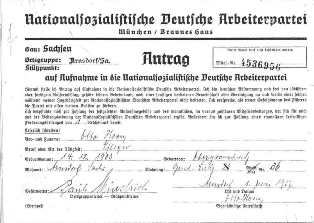
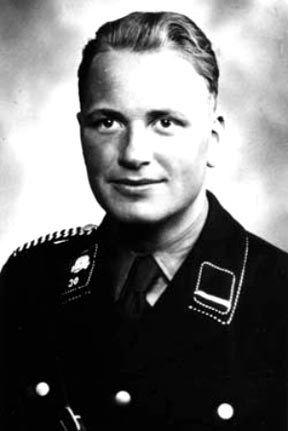

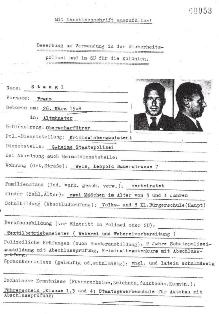
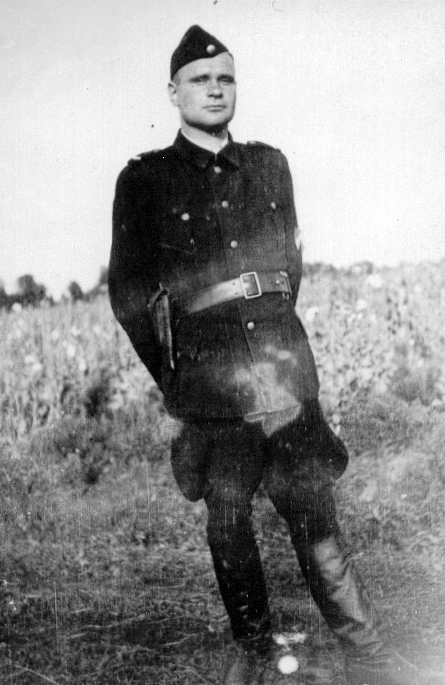
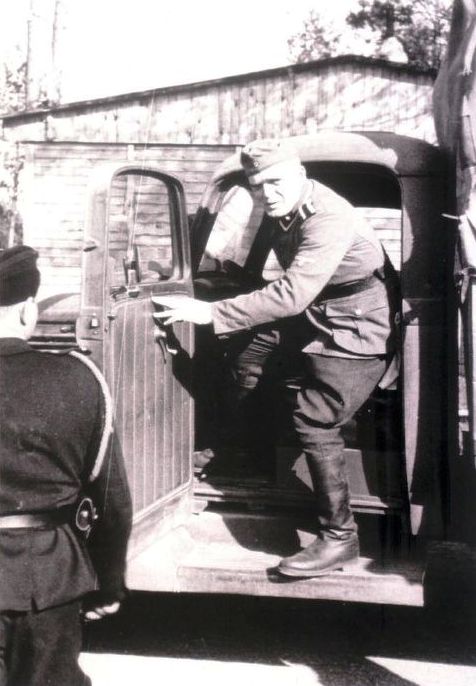

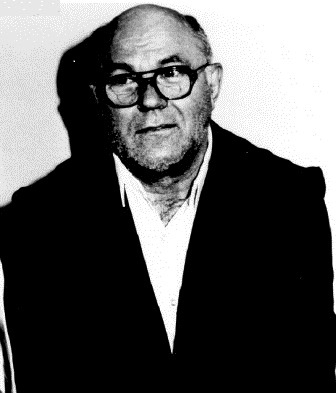
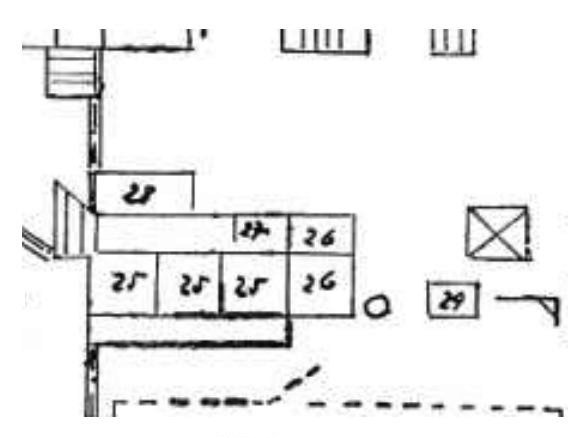
.jpg)